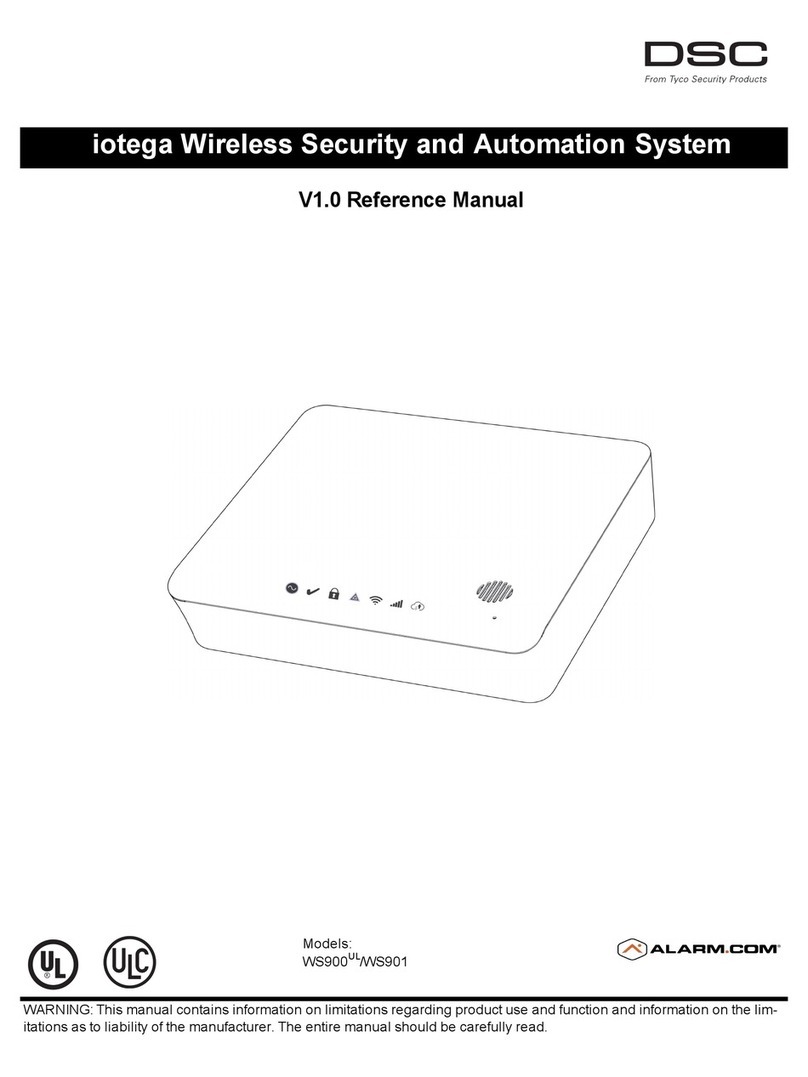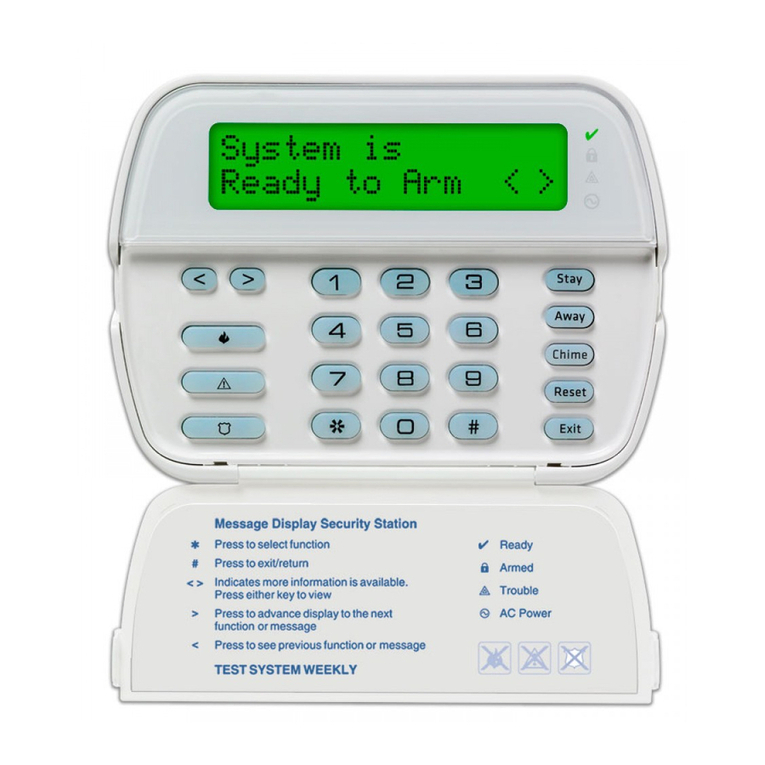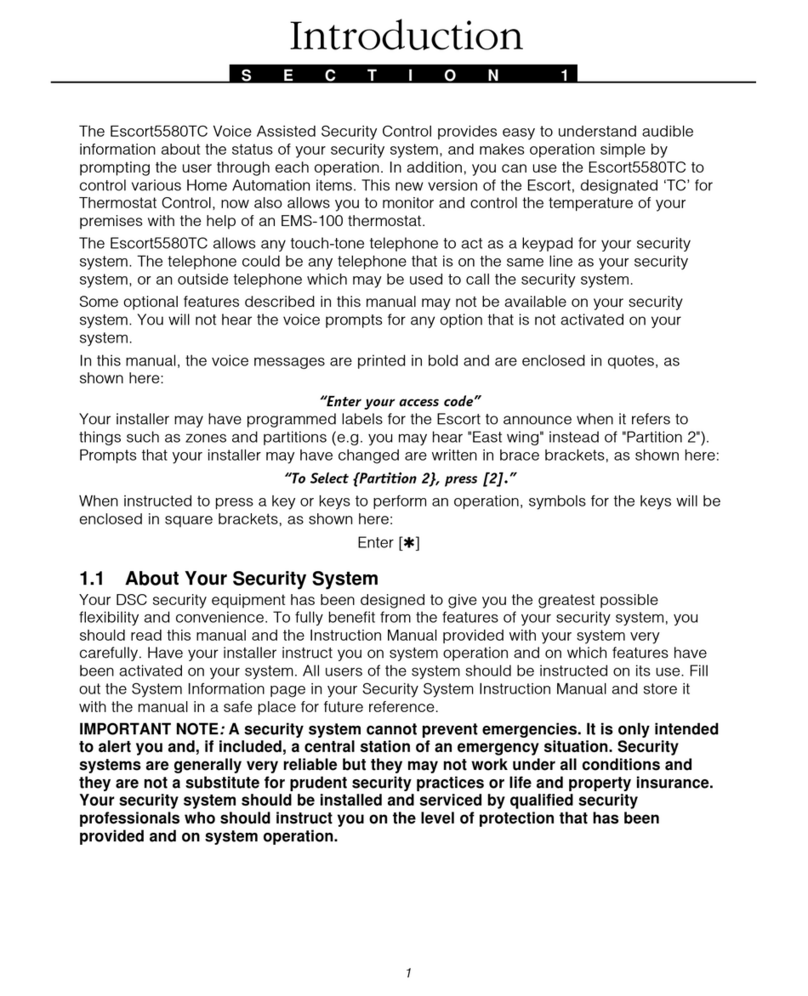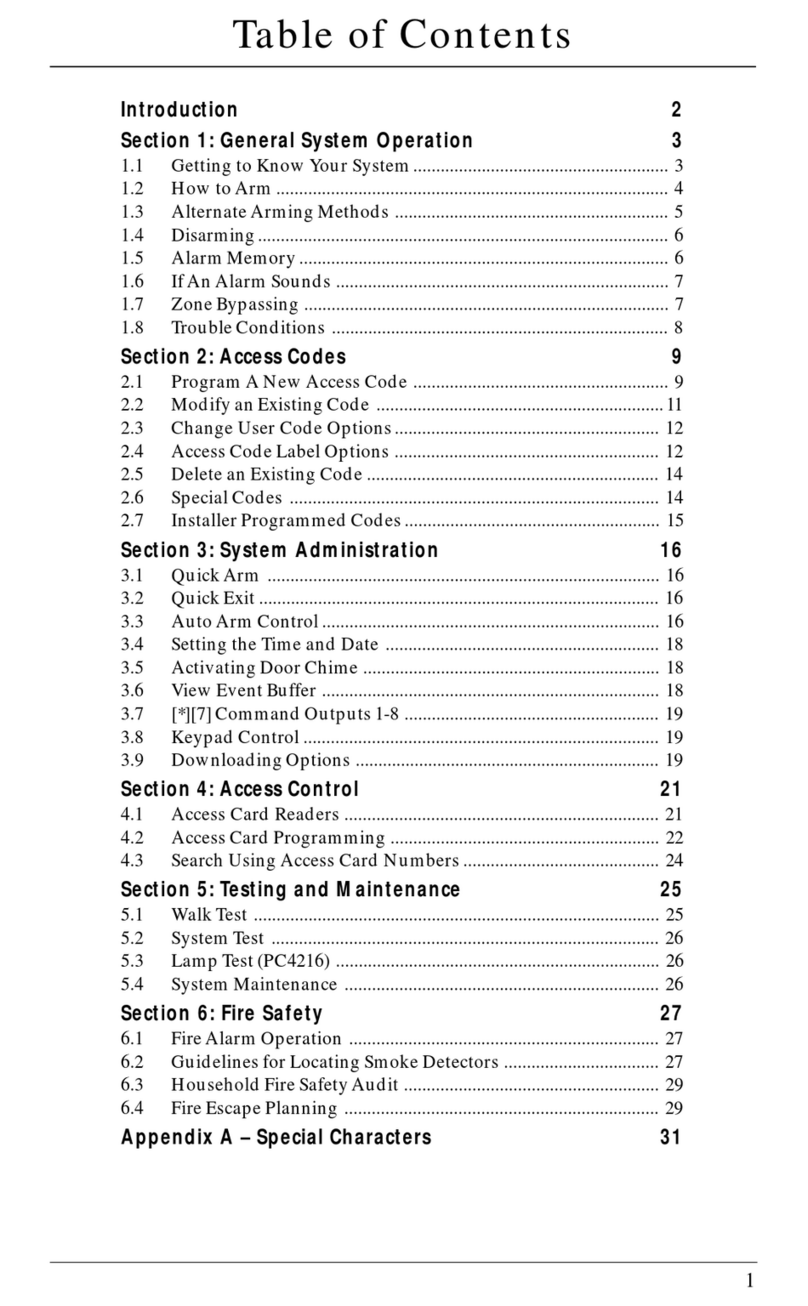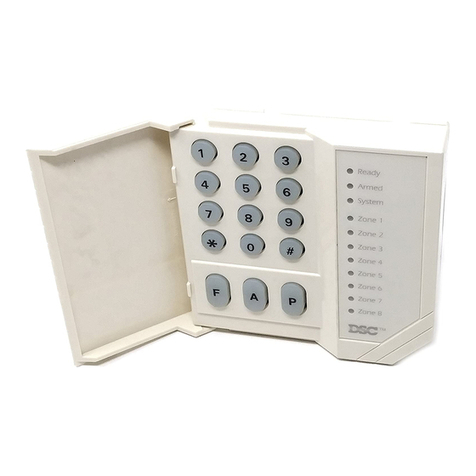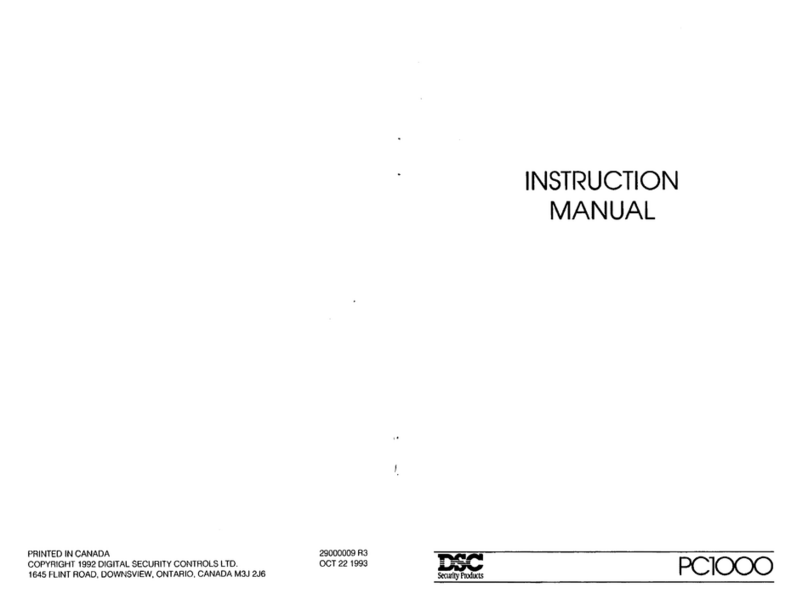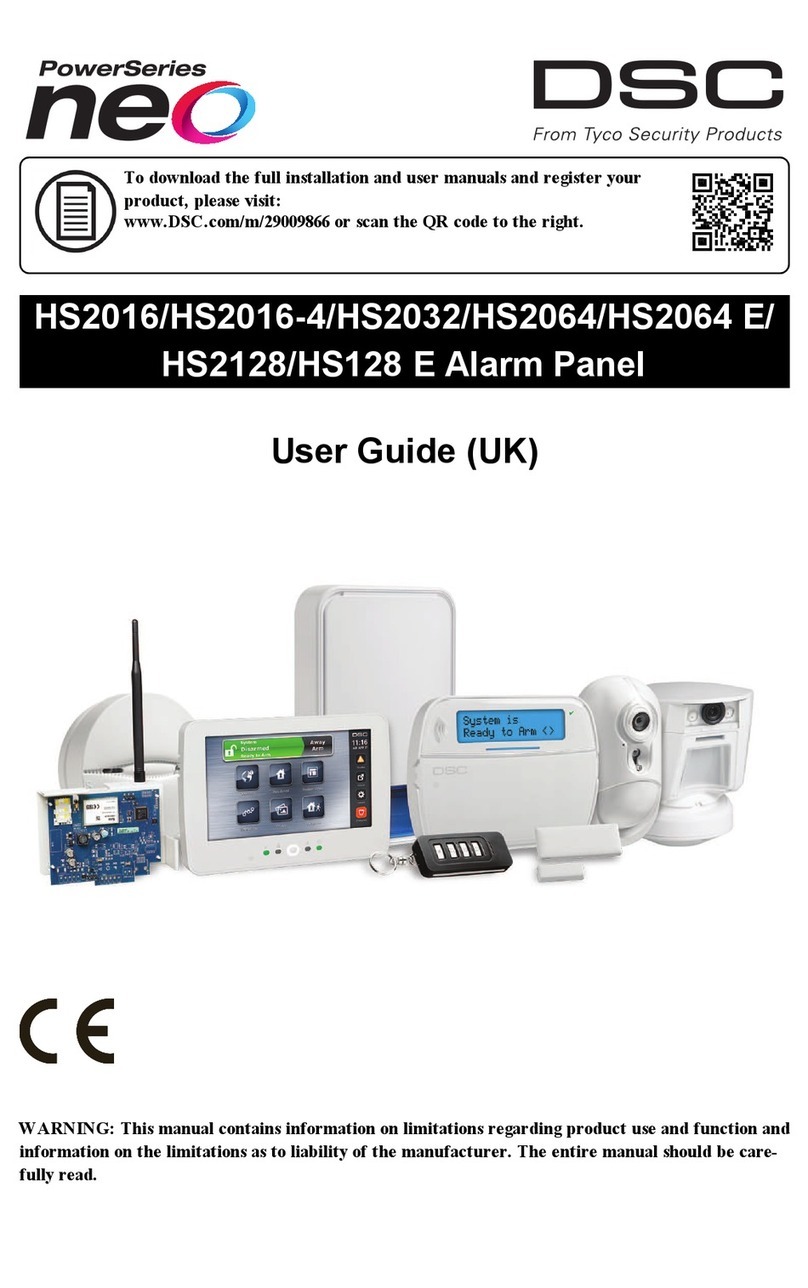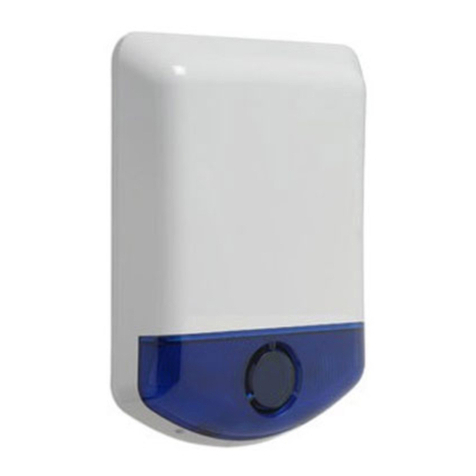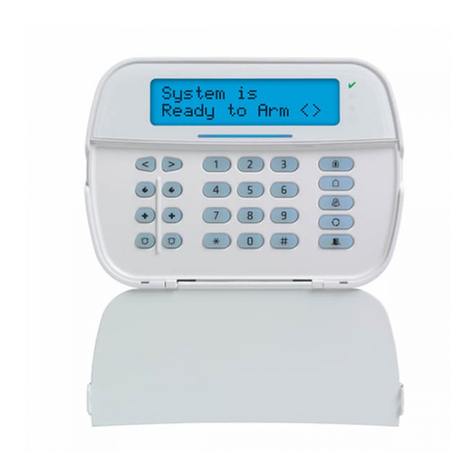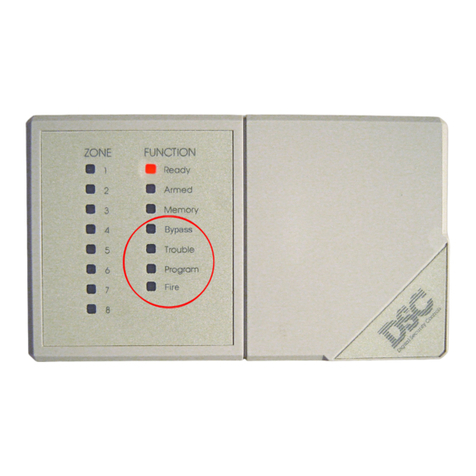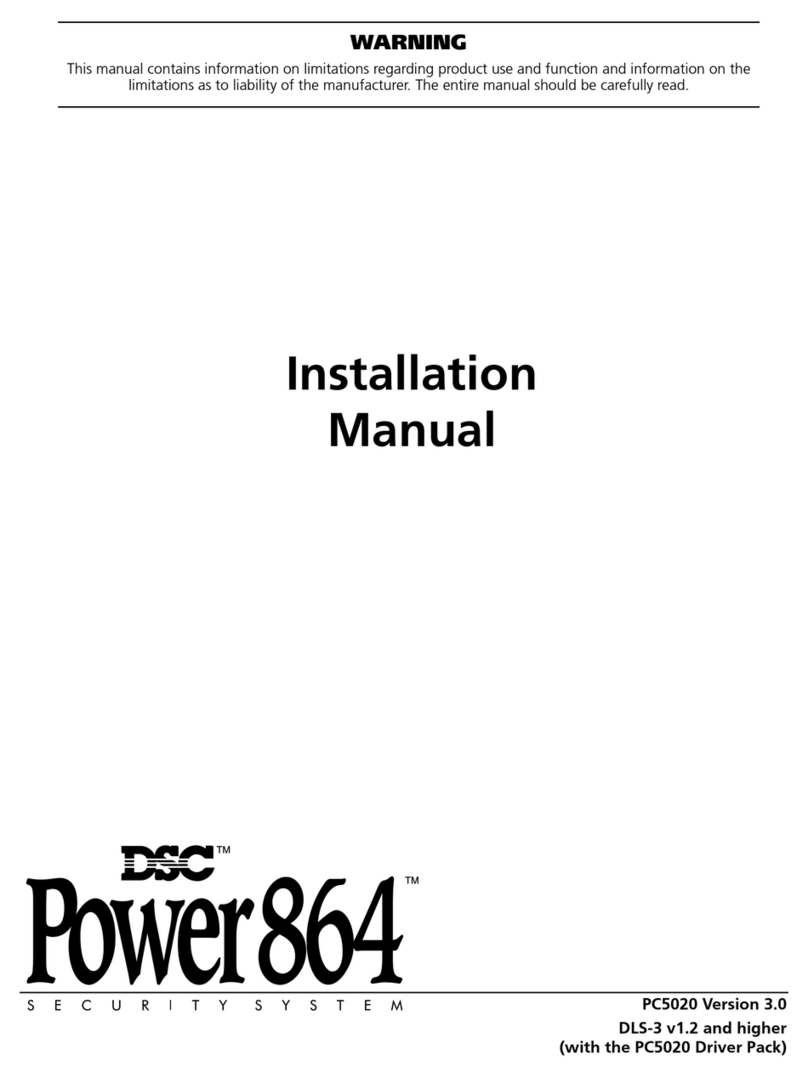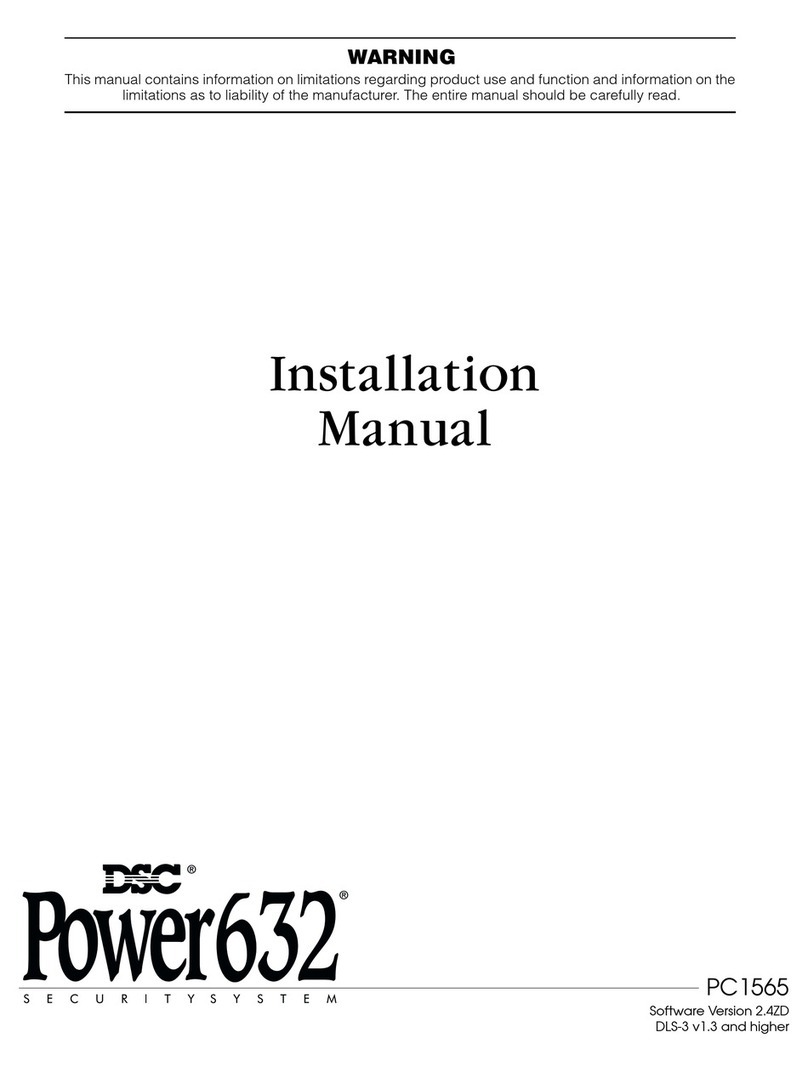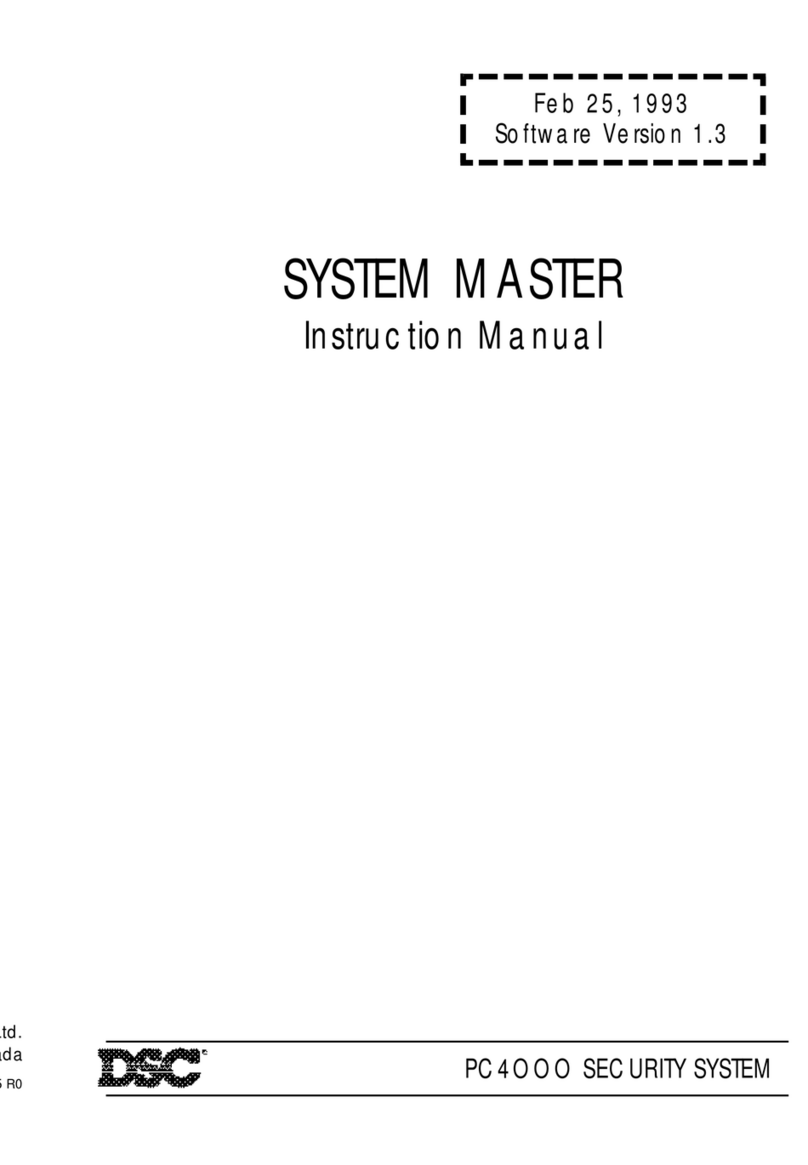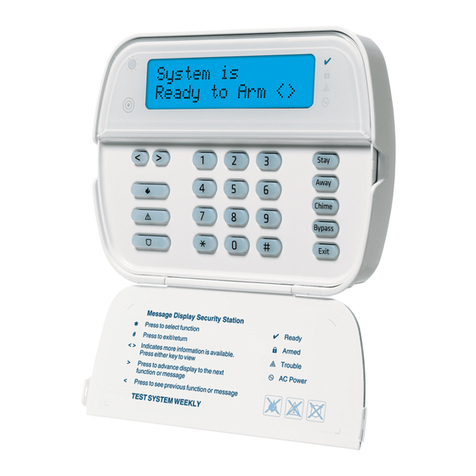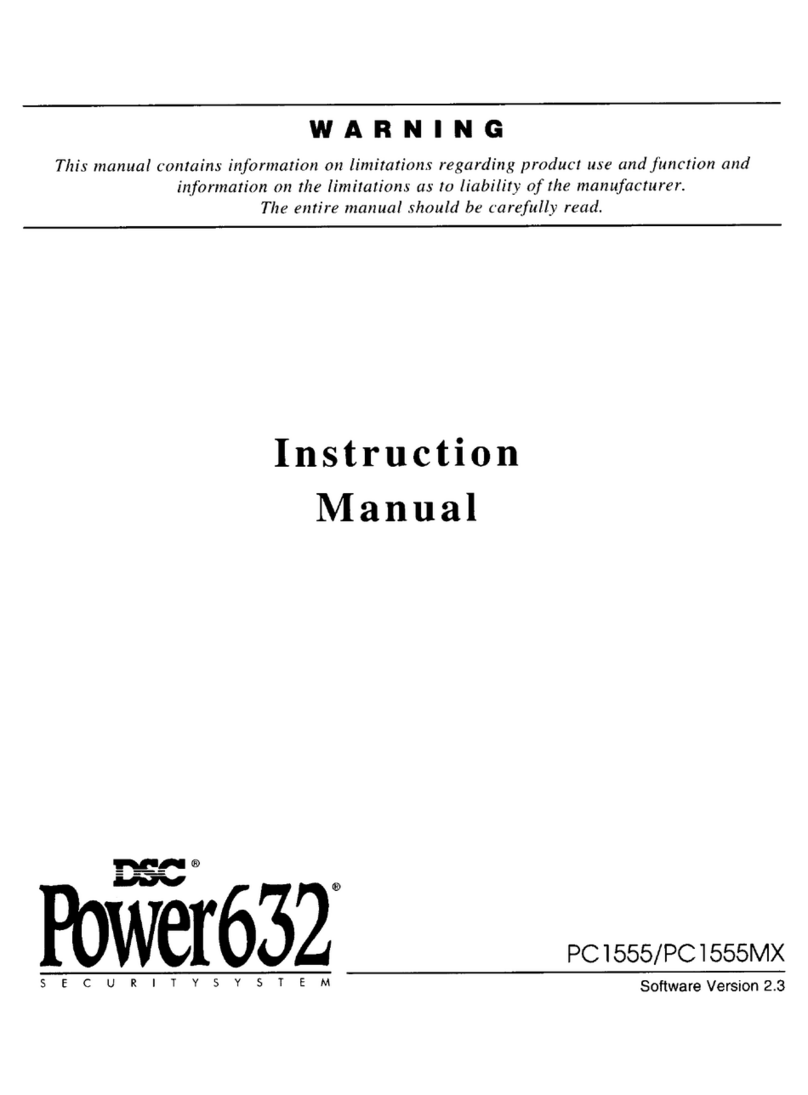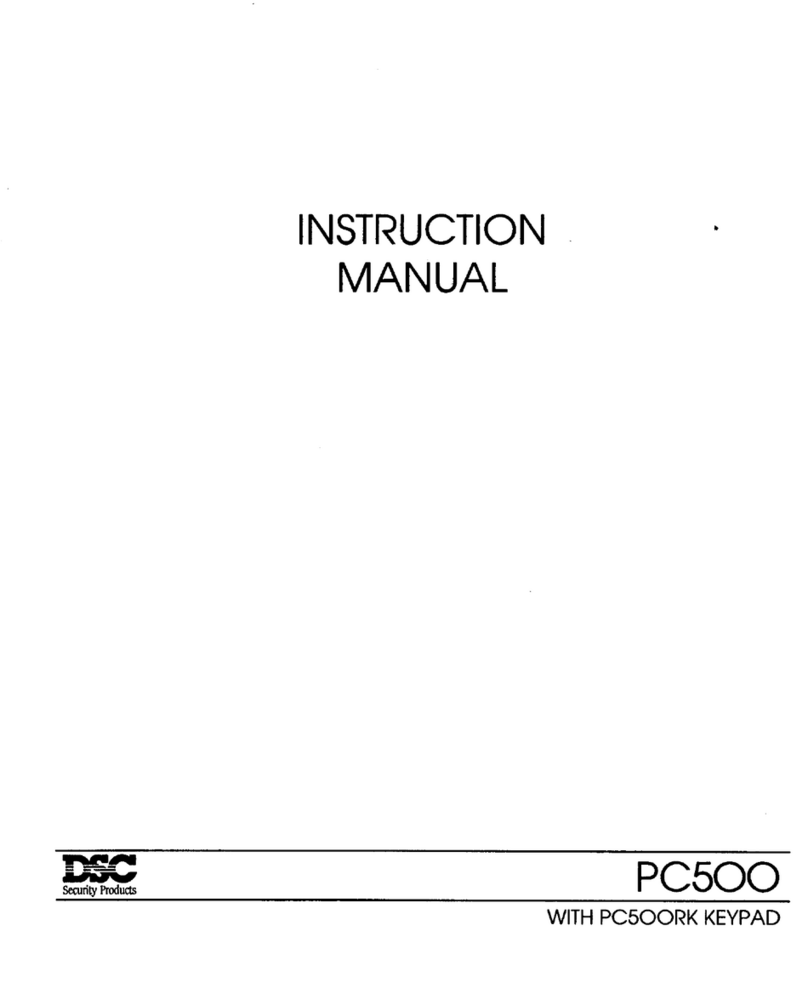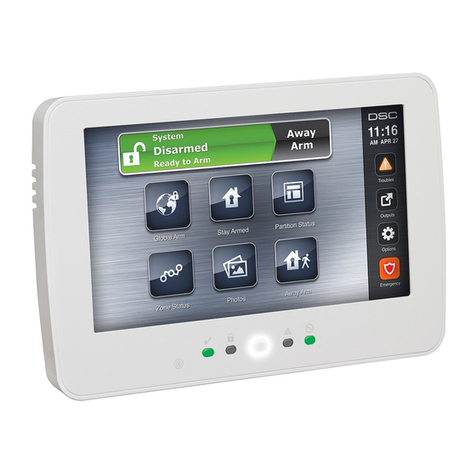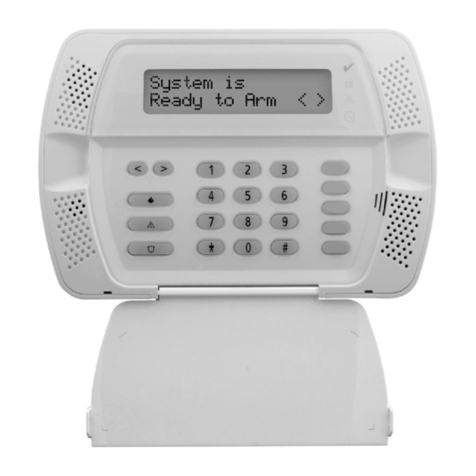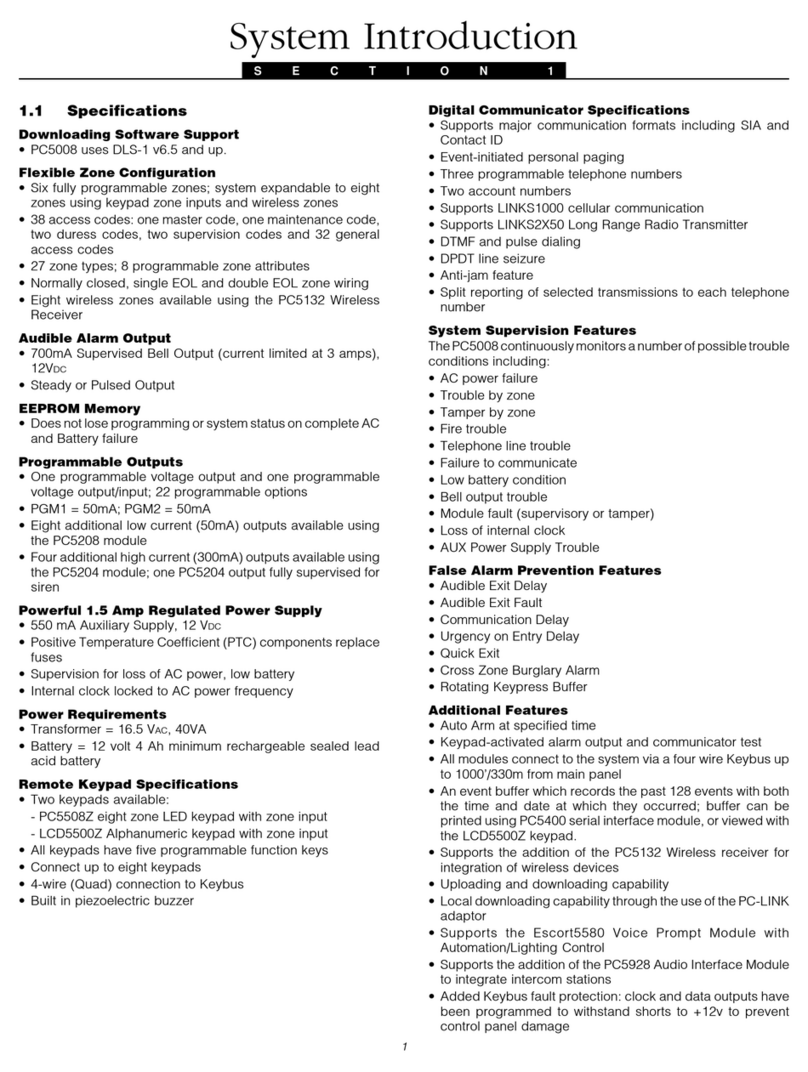LCD5500 Keypad:
The Liquid Crystal Display (L C D) displa ys prompts and
system information on two 16 c h ara cter lines.
If“< >”a p p e ars,more information c a n b e a c cesse d by
using the arrow (< > ) keys.Press [<] to se e th e previous
function or item ofinformation.Press [>] to a dvanc e the
display to ne xtfun ction or ite m ofinform ation.
Press the k e ys on the number p a d a s prom pte d by th e
L C D dis play to vie w alarms or trouble s,to arm and
disarm th e system a n d to bypass zones.
To exita function and return to the Re a dy state,press [#];
to sele cta function press [✱].
NOTE: All functions can be performed from any LCD
keypad by using the LED keypad commands, as well
as by scrolling through the message display.
Important Note: Testsystem weekly and h ave a ny system
trouble conditions correcte d b y your alarm installer.
All Keypads:
Function Keys
(Stay, Away, Chime, Reset, Exit):
If activated by your installer, these
ke ys allow e asy single button
activation ofthe mostc ommonly use d
feature s.F or more information,talk to
your alarm install er.
PC5508, PC5516 and PC5532 Keypads:
Press the k e ys on the number p a d to view alarms or troubles,to
Arm/Disarm the system or to bypass zones.
To exit, press [#]; to sele c ta fun ction,press [✱].
Press both Keys for two seconds
to send a FIR E tra nsmission.
Press both K eys for two s e cond s
to send an A UXILIARY tra nsmission.
Press both K eys for two s e cond s
to se nd a PA NIC transmission.
NOTE
(All Keypads)
: The Fire,
Auxiliary and Panic keys will NOT
function unless programmed by
the installer. If these keys are in
service and the installer has enabled
audible feedback, holding down the
key for two seconds will cause the
keypad sounder to beep indicating
that the input has been accepted and
transmission is underway.
Ready Light
(All keypads)
:
Ifthe R e ady li ghtis O N ,the syste m is
re a d y for arming .
Ifthe R e ady li ghtis O F F ,che ck to s e e
thatall doors an d windows are close d
an d thatall moveme ntis sto p p e d in
are a s c ov ere d b y motion detectors.The
system c a nnotb e arme d unless the
Re ady li ghtis O N in dic ating th atall
zone s are close d an d the syste m is in
the R e ady state.
Display Lights
Armed Light
(All keypads)
:
Ifthe Armed lightis O N,the syste m has
be e n arme d su c c essfull y.
Trouble Light
(All keypads)
:
Ifthe Trouble li g htis O N,c h e c k to se e
whatthe trouble condition is an d c all
for s ervic e (Se e “Vie win g Trouble
Conditions”on pa g e 12).
Memory Light
(LED keypads only)
:
Upon dis arming,ifan alarm has
oc curre d while the syste m was arme d,
the M e mory li ghtwill turn O N (S ee
“Disarmin g the Syste m”on p ag e 6).
Bypass Light
(LED keypads only)
:
Ifthe Byp ass li ghtis O N ,ensure th at
zone s are intentionally byp asse d b efore
armin g th e syste m (Se e “Zone
By p a ssin g”
on p a g e 11).
PC5508 LED Keypad
The PC5508 an d PC5516
Keyp a ds are availa ble for
ap plic ations with fe wer than
32 zones.The functions
ex plaine d in this ma nu alare
the s a me for all thre e LE D
ke yp a d typ es.
LCD5500 Keypad
Fire Light
(LED keypads only)
:
Ifthe Fire li ghtis O N ,a fire alarm has
oc curre d (Se e “Fire Alarm O p eration”
on p a g e 14).
Program Light
(LED keypads only)
:
The Program li ghtwill flash you are
programming a c cess cod es,setting th e
system time or p erforming oth er
programming functions.Ifsomeone is
programming atanother keyp ad,the
Program lightwill turn O N to in dicate
thatthe system is busy.
PC5516 LED Keypad
PC5516 LED Keypad
PC5532 LED Keypad
98
